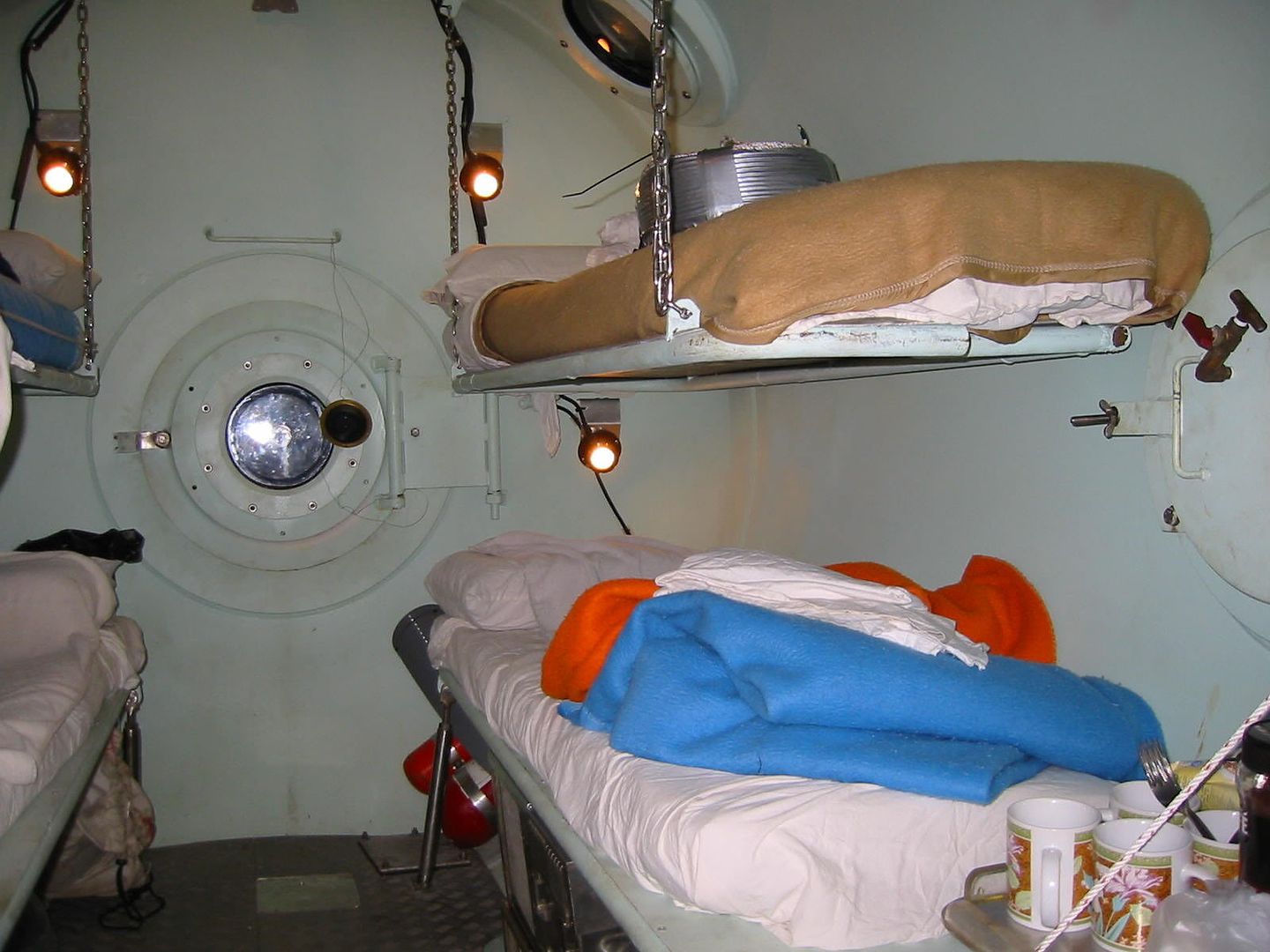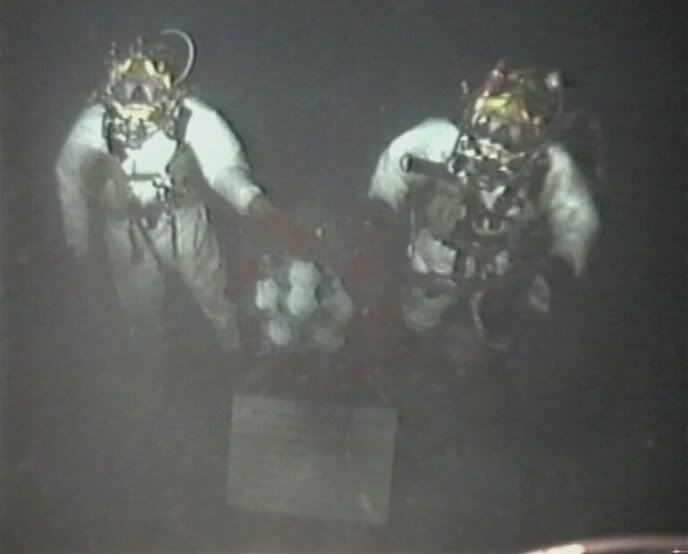DESCRIPTION:
Saturation diving is a diving technique that allows divers to remain at great depth for long periods of time.
"Saturation" refers to the fact that the diver's tissues have absorbed the maximum partial pressure of gas possible for that depth due to the diver being exposed to breathing gas at that pressure for prolonged periods. This is significant because once the tissues become saturated, the time to ascend from depth, to decompress safely, will not increase with further exposure.
Commonly, saturation diving allows professional divers to live and work at depths greater than 50 metres / 165 feet for days or weeks at a time. This type of diving allows for greater economy of work and enhanced safety for the divers. After working in the water, they rest and live in a dry pressurized habitat on or connected to a diving support vessel, oil platform or other floating work station, at the same pressure as the work depth. The diving team is only compressed to the working pressure once and decompressed to surface pressure once over the entire work period of days or weeks.

living compartment
The "Saturation System" typically comprises a living chamber, transfer chamber and submersible decompression chamber, which is commonly referred to in commercial diving and military diving as the diving bell, PTC, Personnel Transfer Capsule or SDC, Submersible Decompression Chamber. The system incorporates various sub-systems, such as hydraulics, pneumatics, electrics, electronics and other mechanical systems. The entire system is managed from a control room (van), where depth, chamber atmosphere and other system parameters are monitored and controlled. The diving bell is the elevator or lift that transfers divers from the system to the work site. Typically, it is mated to the system utilizing a removable clamp and is separated from the system tankage bulkhead by a trunking space, a kind of tunnel, through which the divers transfer to and from the bell. At the completion of work or a mission, the saturation diving team is decompressed gradually back to atmospheric pressure by the slow venting of system pressure, at an average of 30 metres/96 feet per day, travelling 20 hours per day and resting for 4 hours (schedules vary). Thus the process involves only one ascent, thereby mitigating the time-consuming and comparatively risky process of in-water, staged decompression normally associated with non-saturation ("bounce diving") operations.
The divers use surface supplied umbilical diving equipment, utilizing deep diving breathing gas, such as helium and oxygen mixtures, stored in large capacity, high pressure cylinders. The gas supplies are plumbed to the control room, where they are routed to supply the system components. The bell is fed via a large, multi-part umbilical that supplies breathing gas, electricity, communications and hot water. The bell also is fitted with exterior mounted breathing gas cylinders for emergency use.
Saturation diving (or more precisely, long term exposure to high pressure) can potentially cause aseptic bone necrosis, although it is not yet known if all divers are affected or only especially sensitive ones. The joints are most vulnerable to osteonecrosis. The connection between high-pressure exposure and osteonecrosis is not fully understood.
Increased use of underwater ROVs and AUVs for routine or planned tasks means that saturation dives are becoming less common, though complicated underwater tasks requiring complex manual actions remain the preserve of the deep-sea saturation diver.

Sat Diver during Russian Submarine kursk rescue mission few years ago

2 comments:
:D thanx..
so, maknanya kalo org lagi dalam kena dive, xde laa naik kapal trus,kan? kena duk dlm chamber laa yg submersible,kan?
ermm chamber yg submersible tu kita panggil `bell' yg berfungsi sbg lif juga utk diver sampai ke kedalaman tertentu,lepas tu bell tu akan dibawa naik keatas kapal juga untuk dicantumkan dgn `main chamber' tempat tinggal diver trsbt.Presure didlm bell td adalah sama dgn presure didlm `main chamber'
Post a Comment